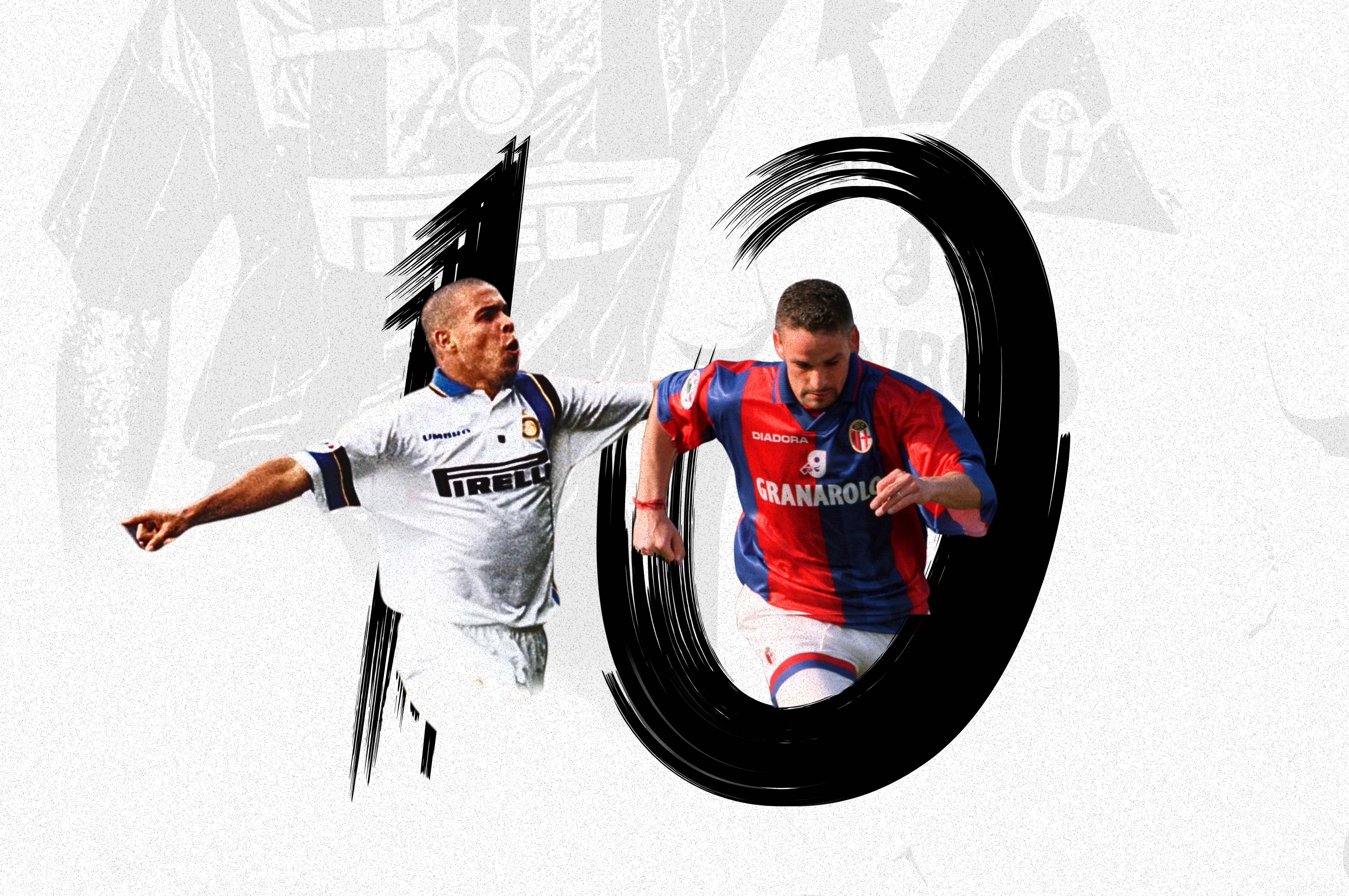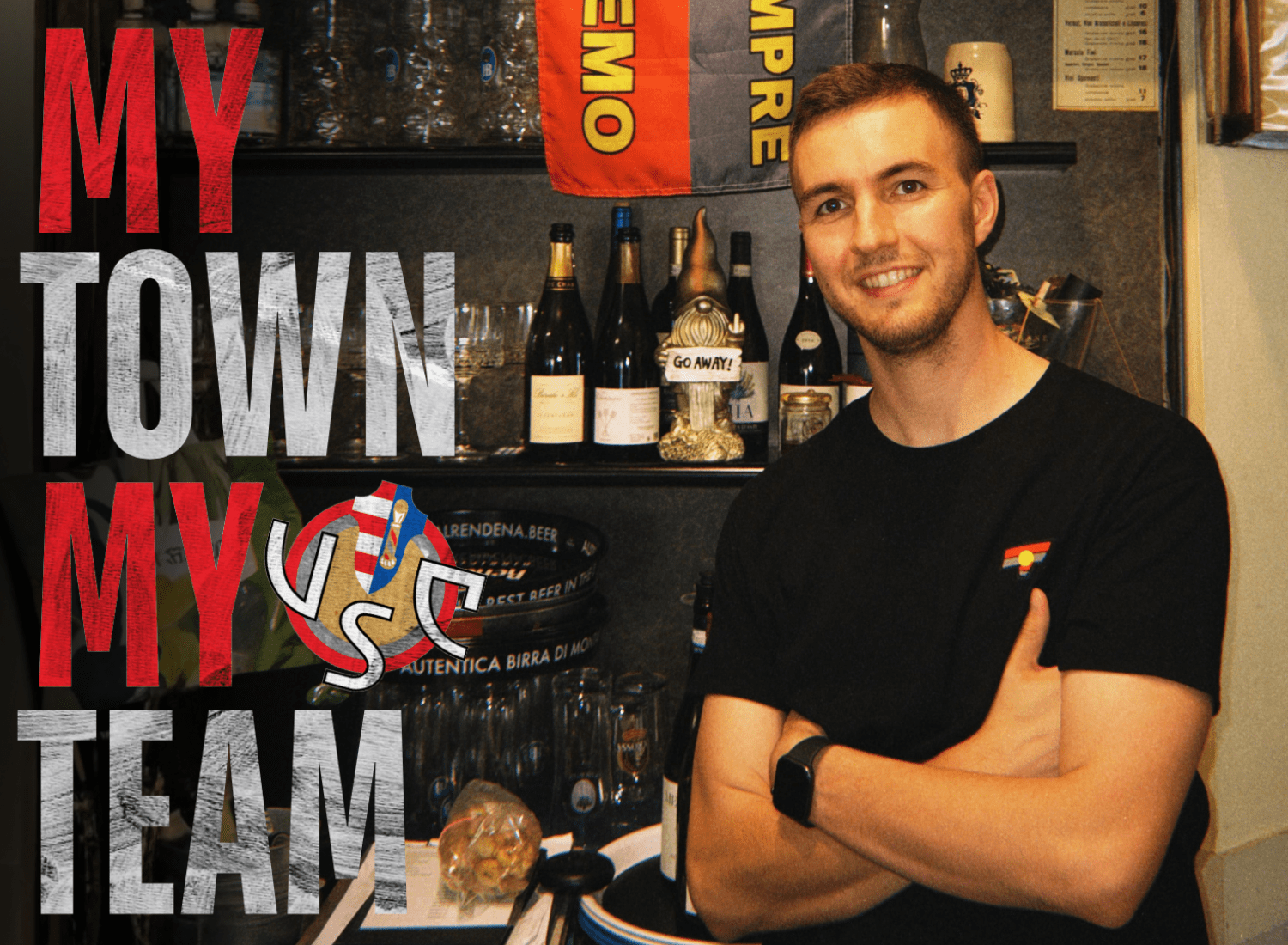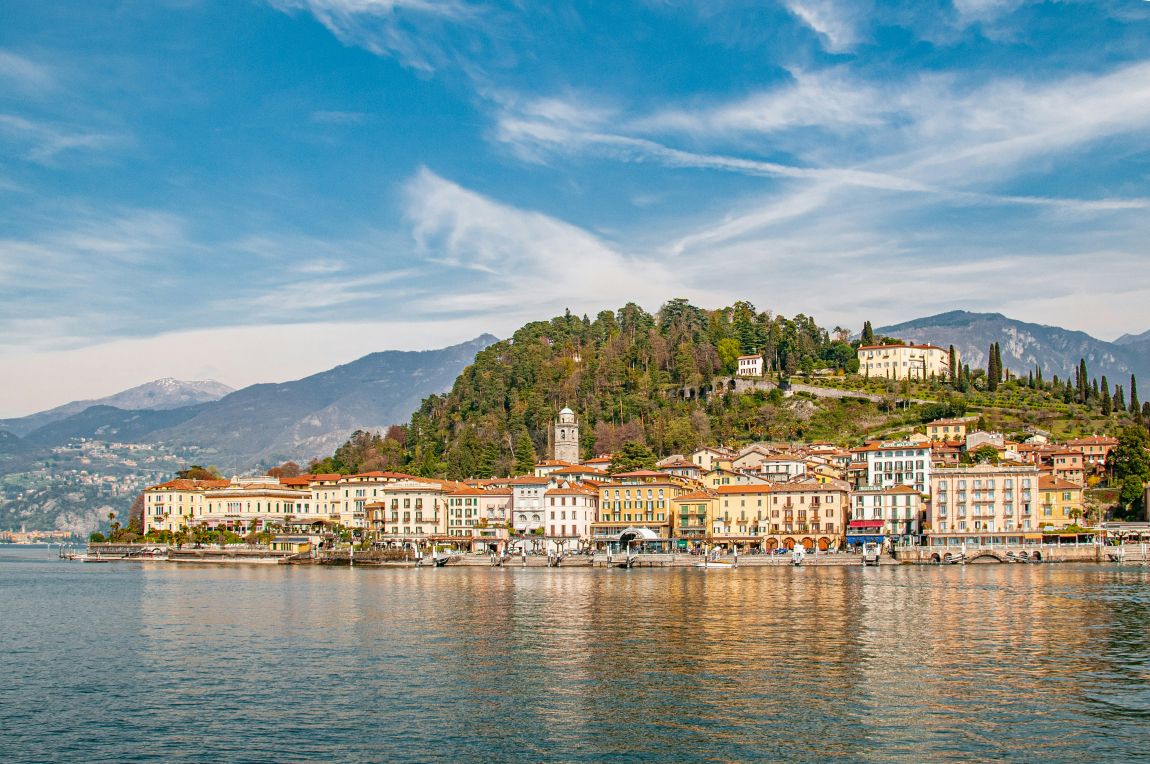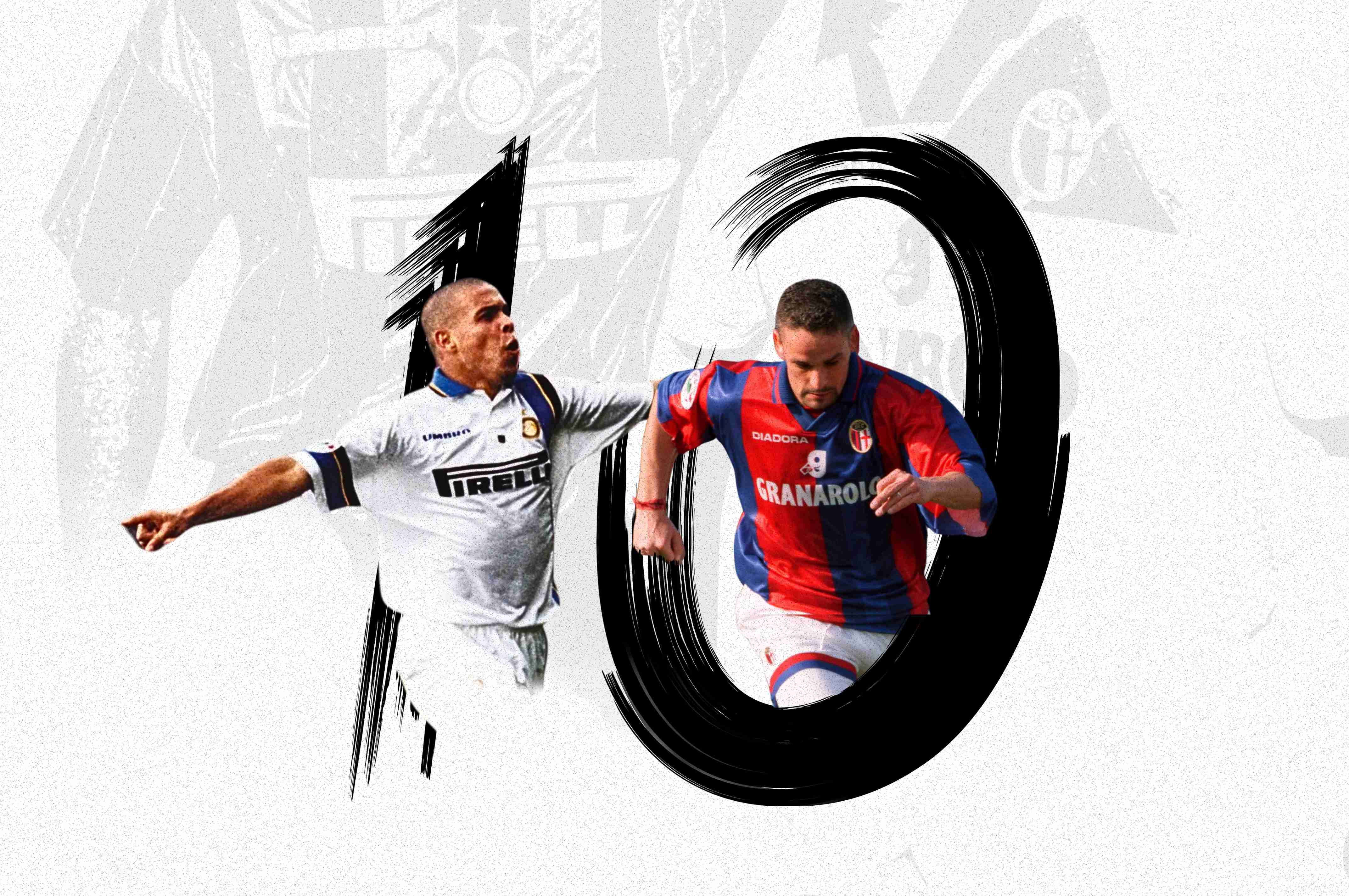
Classic Calcio: Bologna 2-4 Inter, September 1997
By Emmet Gates
Bologna against Inter isn’t a game most Italians are in a desperate hurry to see. The clash between the two in September 1997 was very different, however.
The Stadio Renato Dall’Ara was due to host a meeting between Ronaldo, not quite ‘El Fenomeno’ but well on his way to earning the moniker, and Roberto Baggio, fresh from his move to Bologna after being cast aside at AC Milan.
The game was billed as Baggio vs Ronaldo, the former best player in the world against the current one.
Despite being only 20 years of age, Ronaldo had supplanted Baggio as the supreme talent in European football. In an era where quality attackers were in abundance, Ronaldo was something special, a generational talent.
Ronaldo-mania had run rampant in Italy during the summer of 1997. Massimo Moratti took full advantage of the breakdown in the player’s relationship with Barcelona to trigger the Brazilian’s buyout clause.
At £19.5m, there was little Barcelona could do but watch Ronaldo leave La Liga for Serie A, and his signature represented the last time Serie A truly flexed its financial muscle and signed the world’s best player.
Moratti’s yearning to sign Ronaldo started in the aftermath of a drab 0-0 draw against Fiorentina in Florence. Then under Roy Hodgson, Inter were unsurprisingly dull, and Moratti wanted more excitement.
“On the way back I said to the driver, who was a grumpy bloke: ‘Next year I’ll sign Ronaldo so that you’re happy’,” Revealed Moratti years later.
“I have to be honest, it wasn’t just a joke.”
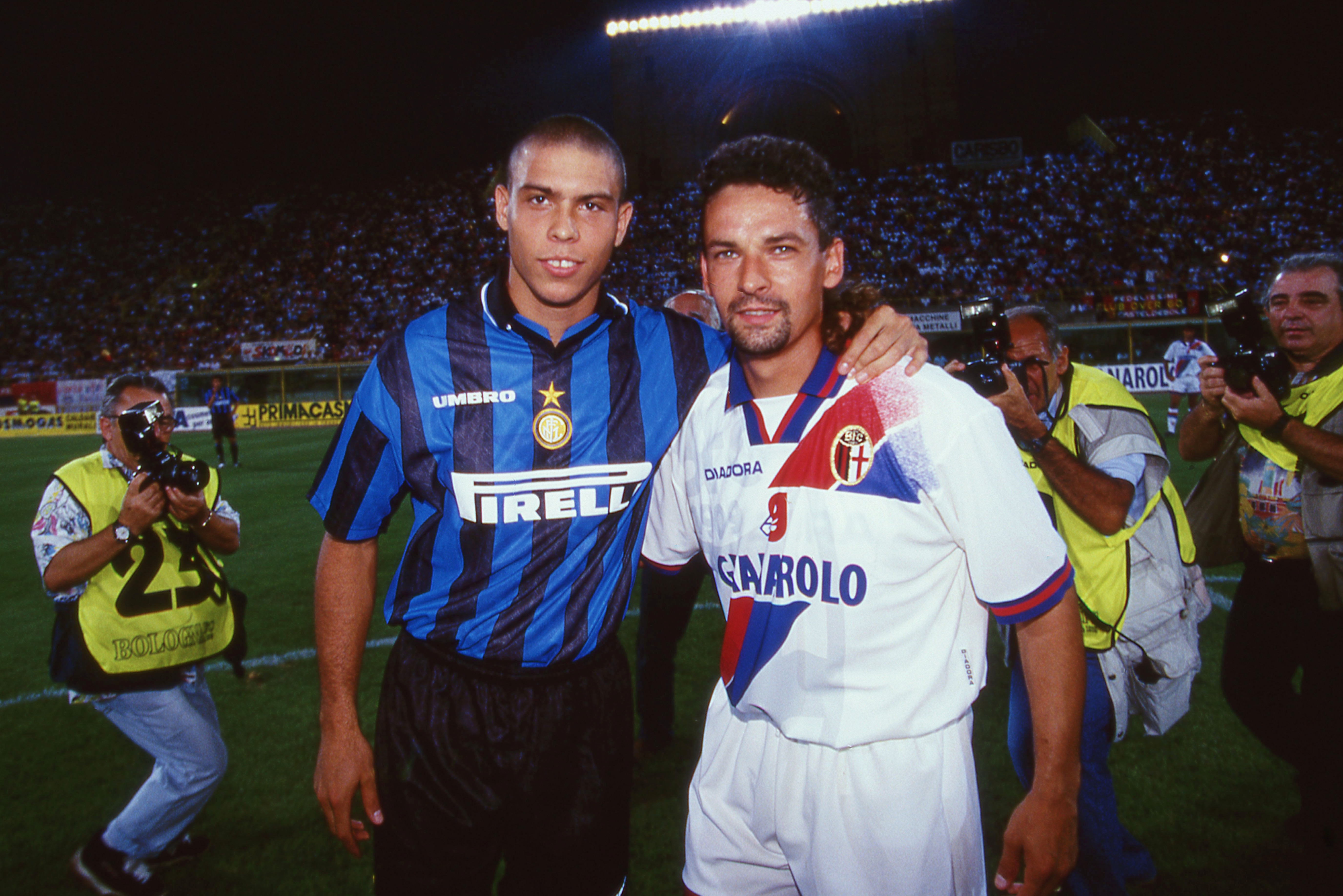
Much can be said about the sheer excess and often chaotic nature of Moratti’s spending during his tenure as Inter owner, but it can never be said he lacked ambition.
He was as good as his word, and Ronaldo arrived in July 1997 after guiding Brazil to the Copa America. Moreover, Hodgson was relieved of his duties and replaced by Gigi Simoni, who’d done well the year before with Napoli.
The anticipation surrounding Ronaldo and his debut was reaching a fever pitch ahead of the season opener against Brescia at San Siro.
Ronaldo shirts were everywhere, and most Interisti expected a samba show.
They got a show alright, but not from Ronaldo.
Alvaro Recoba upstaged the big-money signing by producing one of the greatest cameo debuts in the history of the game, smashing in not one — but two — long distant missiles that turned the game on its head after Dario Hubner had given the Rondinelle a surprise lead.
Ronaldo had been subdued on the opening day, and then an international break meant a two-week stop to club action. Inter fans wanted to see more of their superstar signing in action.
When Serie A resumed on September 14th, Ronaldo was ready to take centre stage.
If Inter and Ronaldo were in one corner, in the opposite were Bologna and Baggio. If Ronaldo was a player at the top of his career, Baggio was trying to resurrect his.
The previous two years hadn’t been kind to Il Divin Codino. Shoved out of Juventus after helping end a nine-year Scudetto drought, he moved to Milan in 1995 and won a second title, only to receive the same treatment.
In the summer of 1997 a returning Fabio Capello told Baggio there was no longer room for him at Milanello, and it was best to move on to greener pastures. A move was infamously agreed with Parma only for the coach, a young and rigid Carlo Ancelotti, to veto it.
Ancelotti was a disciple of Arrigo Sacchi and early on in his coaching career was a devout believer in Sacchi’s 4-4-2 press. “Now, years later, I regret how it went,” confessed the serial Champions League winner in his 2010 autobiography The Beautiful Games of an Ordinary Genius.
“I was wrong to be intransigent. Over time, I learned that there is always a way of allowing a lot of great and talented players to work together and get along.
“At Parma, I still thought that 4-4-2 was the ideal formation in all cases, but that’s not true. If I had a time machine, I’d go back and of course I’d take Baggio.
“How can you give up on someone like him?”
Ancelotti’s rejection meant Baggio still needed a club, and with the 30-year-old looking to remain in Italy with France ’98 looming on the horizon, Baggio knew he needed to be on display every week in Serie A.
Talk of a move to Udinese or Napoli remained just that. Step forward the Rossoblu.
Bologna had survived relegation in 1996-97 after coming up from Serie B the year prior and wanted to make a push up the division by bringing Baggio to Emilia-Romagna.

Yet even then the deal was fraught with difficulty. So low had Baggio’s stock fallen in his homeland that manager Renzo Ulivieri, who was a respectable coach but not among the calcio elite, wasn’t happy with the 1993 Ballon d’Or winner’s arrival.
Season ticket sales went through the roof. The pre-season retreat, that usually gathered a couple of hundred diehard supporters, produced thousands. Entire families flocked to catch a glimpse of Baggio in a Bologna shirt.
In a symbolic token of his rebirth, Baggio decided to cut the game’s most famous hairstyle.
Now shorn of his locks, Baggio meant business.
A sign of the times in Serie A, even Bologna had a very good squad. Baggio joined an attack that already consisted of tall Swede Kennet Andersson and former Foggia star Igor Kolyvanov.
In midfield there was seasoned pros like Giancarlo Marocchi, Davide Fontolan and Igor Shalimov, while in defence Michele Paramatti was gaining attention from some of the league’s heavyweights.
Baggio scored a penalty on the opening day, a 4-2 loss to Atalanta in Bergamo. But most eagerly anticipated the clash with Inter. The wait was worth it.
On a rain-drenched Sunday at the Dall’Ara, the first official meeting of Ronaldo and Baggio produced a slobberknocker of a contest.
Ulivieri, in an uncharacteristically attacking move, set Bologna out in a 3-4-3 system, with Baggio playing in behind Kolyvanov and Andersson.
Inter, meanwhile, utilised a 3-4-1-2. Youri Djorkaeff, the criminally underrated Frenchman who would from this point live in the shadow of Zinedine Zidane for the remainder of his career, was Inter’s No10. Ronaldo and cult hero Maurizio Ganz led from the front.
The weather conditions, in combination with the state of the pitch, didn’t lend itself to a game of technical brilliance, at least not yet. The ball ping-ponged from one half to the other in the opening exchanges, neither side capable of grabbing a firm hand.
Baggio drew excitement from the home crowd when he picked the ball up deep, swivelled and released Carlo Nervo down the right. Ronaldo hadn’t so much as touched the ball in the first five minutes.
But such was his reputation then that when Ronaldo did eventually get a hold of the ball, the decibel level rose sharply.
For all the talent on the pitch, you wouldn’t have guessed the first goalscorer of the day.
A long distance Ronaldo free kick was blocked and rolled out for a corner. Djorkaeff’s in-swinging corner was met by the head of defender Fabio Galante, who planted his header down into the ground and into the net.
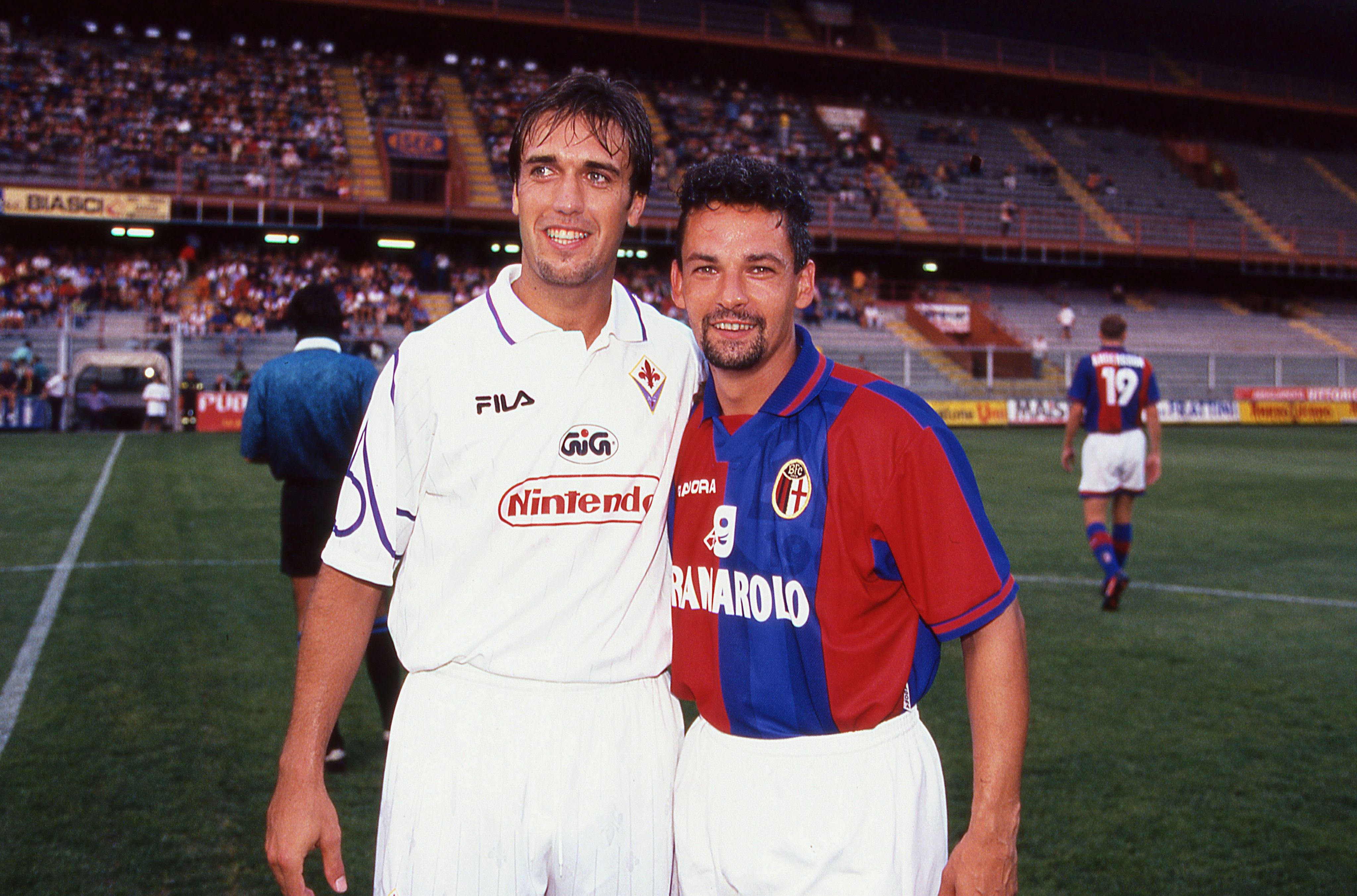
Galante only scored two goals for Inter in three seasons, and this was one of them.
Ronaldo had been unusually quiet in the opening 15 minutes, but gave a timely reminder of his outrageous talent.
In a move made famous by Romario, Ronaldo caressed the ball with his instep, moving it from out to in with one fluid motion while also nutmegging the Bologna captain Stefano Torrisi and winning a free kick. This received a massive cheer from the crowd, including the home support.
This was only the second game of the season, but Baggio was already forming a good understanding with Andersson and Kolyvanov, giving little give-and-goes and feeding off each other.
Bologna were awarded a free kick on the edge of the box when Baggio was brought down after one such give-and-go with the tall Swede. The resulting free kick from Baggio was poor by his own standards. Yet he’d fired Inter a warning.
Each of Baggio, Andersson and Kolyvanov would take turns dropping deep, and this was causing Inter’s defence major issues.
Somewhat against the run of play, though, Inter made it 2-0.
A loose ball in the middle of the pitch was won by Diego Simeone, who prodded it sideways to Djorkaeff. The Frenchman instantly slid a through ball into the feet of Ganz down the right-hand channel, who was onside and had oceans of space.
Ganz ran towards goal and cooly slotted the ball under the feet of Bologna stopper Alex Brunner to double the lead.
The Italian was on borrowed time at Inter. A stalwart during the Hodgson era, Ganz would find minutes hard to come by as Ronaldo and Ivan Zamorano became Simoni’s preferred duo in attack, and with Recoba on the bench and Nwankwo Kanu on the club’s books, he joined neighbours Milan in December.
A minute before half-time and Baggio’s earlier warning went ignored. Kolyvanov won a free-kick in the edge of the area after he was bundled over by Taribo West. Up stepped Baggio a second time.
This time, he pulled across the ball, sending it across the wall and into the top corner of Gianluca Pagliuca’s net. It was Baggio’s first goal from a set piece in nearly a year, and it gave Bologna a lifeline.
“I am not a person who is usually too impressed by other players but I make an exception for Baggio,” said Andersson a few years ago. “It was extraordinary. He was on another level to the rest because he could see things on a football pitch that I did not know players could see.”
Bologna went for the jugular at the beginning of the second half, with Kolyvanov testing Pagliuca from distance and Andersson nearly feeding Baggio after producing a dainty Cruyff turn inside the penalty area that bedazzled Javier Zanetti.
The pressure appeared to be mounting, and then Ronaldo decided to remind everyone that it wasn’t only Baggio capable of genius.
Ganz collected the ball on the right-hand side, ran across the middle of the pitch and shifted it to Djorkaeff. Inter’s No 6 ran with the ball before sending it to the feet of Ronaldo, who was loitering on the peripery of the Bologna box.
Marked by the experienced Massimo Paganin, Ronaldo took one touch with his left, shimmied to his right, glided into the box and dispatched the ball into Brunner’s bottom corner with his left foot.
The whole move was three touches. It was brilliant. It was sleek. It was devastating. It was his first goal for Inter.
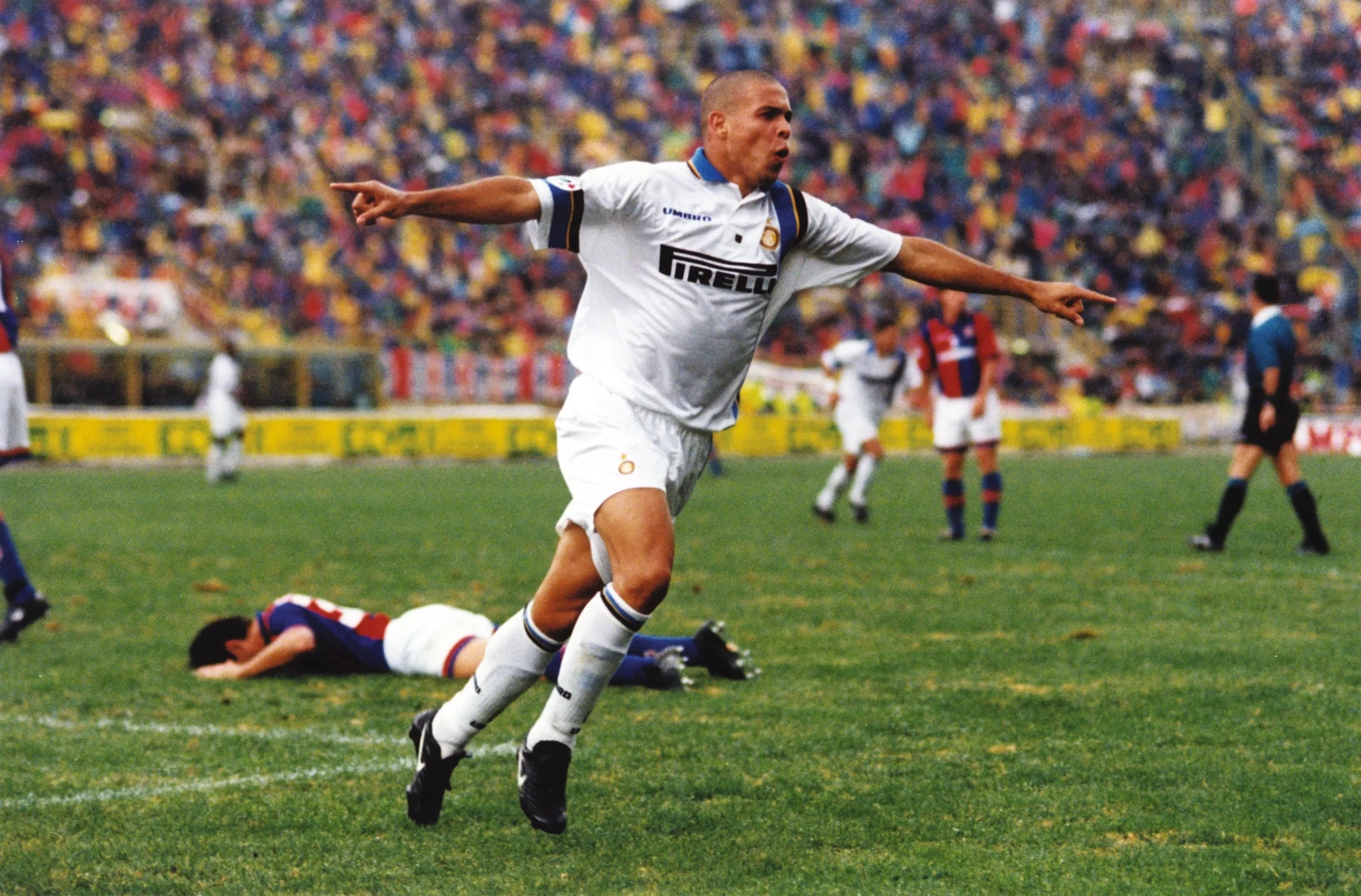
“Ronaldo? Mamma mia! What a player,” reflected Baggio, who would join Inter the following summer to team up with Ronaldo in the greatest partnership that never was. “He came from the future. He played football with technique and speed ahead of his time.
“I saw him do things that were unthinkable, which no one had done or thought of until then. He was unique.”
This was what Inter had broken the world transfer record for, and it was now 3-1 to the Nerazzurri. Seconds later he almost made it four.
Baggio was dispossessed down the left and the ball fell to Ronaldo. The Brazilian was just inside the Bologna half but now had space to run into, and this was dangerous.
Ronaldo clicked through the gears and despite sections of turf at the Dall‘Ara resembling a beach, he kept control of the ball as he glided past Bologna players at will. Paganin and Torrisi couldn’t get close to him as he turbocharged past both.
Now barrelling down on goal, his shot was tame and easily saved by Brunner, but it was a snapshot of what lay ahead for Serie A’s grizzled defenders for the rest of the campaign.
No sooner had Ronaldo terrorised Bologna’s defence than the Rossoblu were handed a lifeline.
The physicality of Kolyvanov and Andersson was still causing Inter issues, and the latter won a high ball that landed at the feet of the former. Kolyvanov tried to make room for himself inside the penalty box but was shepherded out by West.
Andersson took possession of the ball again just on the edge but slipped a pass into the feet of the onrushing Paramatti, who was hauled down by West to win a penalty.
Baggio stepped up to send Pagliuca the wrong way. 3-2 to Inter with over half an hour remaining.
Could Bologna salvage a draw?
The game then became a little scrappy, with neither being able to dominate proceedings. The continual rain did little to help the conditions, but eventually a measure of quality was shown, and the seal was put on an Inter triumph.
Baggio, in a rare case, failed to control a ball in Inter’s half. It bounced off him and into the path of the onrushing Simeone.
The Argentine launched a run deep into the Bologna half. Ronaldo and Ganz were to his left; Djorkaeff to his right. Bologna defenders rushed to swarm Simeone, but it left space open.
Simeone, a far better player than people gave him credit for, slid a through ball for Djorkaeff. Now with just Paganin in front of him on the periphery of the box, Brunner decided to come off his line for reasons that remain unknown.
Djorkaeff sized up the situation and, in a flash, chipped both Paganin and Brunner, the ball floating over the pair and dropping into the net.
It put the coup de grace on a pulsating game and a classy display from Djorkaeff, who let Ronaldo know he wasn’t the only one with a touch of brilliance in the Inter side.
Inter’s fourth killed any chance of a comeback from the home side, and so the game petered out in the remaining 20 minutes. In another sign of the times, Ronaldo was scythed down twice by Bologna players without either being given so much as a yellow card.
Referee Stefano Braschi called time on one of the games of the season. Baggio, Ronaldo and Djorkaeff all showed their brilliance, while the supporting cast of Andersson, Kolyvanov, Simeone and Zanetti more than played their role.

The marriage between Baggio and Bologna wasn’t fruitful at first. They didn’t win a league game until early November and went four consecutive games without scoring. The player even stormed out of the club after learning he’d be dropped by Ulivieri for the home game against Juventus in January.
Yet fences were mended and Baggio produced the most productive spell of his career, scoring 22 goals in the league as Bologna qualified for Europe and earning himself a place in Cesare Maldini’s squad for France ’98.
“We were in the presence of something different,” Marocchi said in an interview with Sky Sports. “If you have a player like Baggio, you build the team around him.”
Ronaldo, meanwhile, pushed Inter all the way in the Scudetto race with Juve while also winning the 1998 UEFA Cup.
His first season at Inter was the greatest version of Ronaldo. A player so frightening, so otherworldly, he put the fear of God into Serie A’s most accomplished defenders.
Over the years, Paolo Maldini, Fabio Cannavaro, Alessandro Nesta and many more all revealed Ronaldo was the one player who caused them a sleepless night.
“Ronaldo was always the one player who stirred fear in me,” Cannavaro said. “He is the player of our generation. The Phenomenon.”
“He was an alien among humans,” Gigi Buffon said of him. “It seemed like he was created in a lab.”
While Baggio represented the present, Ronaldo was a window into the future. And against Bologna, he gave a little taste of what the future looked like.
Related Articles
Related Articles
We get a local take on what's hot in Cremona - where to eat and drink, sights to see and handy hints that might not be in the tourist guides.
The Artemio Franchi will always be the main reason calcio fans head to Florence but there is one other thing that must be on the to-do list.
After the final whistle is blown at Stadio Giuseppe Sinigaglia, there is no better place to unwind than Bellagio.


